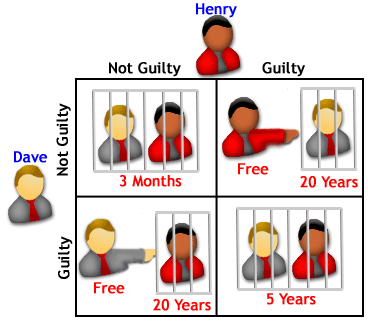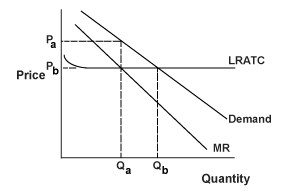Published On:Thursday, 29 December 2011
Posted by Muhammad Atif Saeed
Oligopolies
What is an Oligopoly?
Oligopoly refers to a market with "few sellers". Oligopolies interact among themselves. When an oligopolist changes a price, it must take into account how other firms in the industry will respond. Within an oligopoly, the products can be similar or differentiated. Oligopoly markets have high barriers to entry.
The Prisoner's DilemmaThe "prisoners' dilemma" was first described in the field of "game theory", which is a branch of applied mathematics and economics dealing with choices made under conflict and uncertainty. Suppose that the police believe Dave and Henry have committed a felony, but the evidence is weak. The police have placed Dave and Henry in jail, in separate cells. The police need the confession of at least one of the prisoners in order to get a felony conviction. If neither prisoner confesses, then the police can only convict them on a minor charge with a three-month prison term. Each prisoner is offered the following deal: if one testifies against the other while the other remains the silent, the one who testifies will not be convicted of anything, while the one who remains silent will go to jail for 20 years. If both confess, then each will receive a five-year jail term.
To sum up the situation:
The Prisoner's DilemmaThe "prisoners' dilemma" was first described in the field of "game theory", which is a branch of applied mathematics and economics dealing with choices made under conflict and uncertainty. Suppose that the police believe Dave and Henry have committed a felony, but the evidence is weak. The police have placed Dave and Henry in jail, in separate cells. The police need the confession of at least one of the prisoners in order to get a felony conviction. If neither prisoner confesses, then the police can only convict them on a minor charge with a three-month prison term. Each prisoner is offered the following deal: if one testifies against the other while the other remains the silent, the one who testifies will not be convicted of anything, while the one who remains silent will go to jail for 20 years. If both confess, then each will receive a five-year jail term.
To sum up the situation:
 |
The optimum result for the two together is to stay silent, in which Dave and Henry will each get only three months prison time. However, each prisoner does not have knowledge of what the other prisoner will do. The most rational response from the individual is to confess. If the other prisoner stays silent, then that person gets off free; if the other prisoner confesses, then the prison term will be less (five years vs. 20 years).
The prisoners' dilemma illustrates a situation in which individuals arrive at a non-optimal solution, due to a lack of cooperation and trust. A similar situation occurs with oligopolies. If firms within an oligopolistic industry have cooperation and trust with each other, then they can theoretically maximize industry profits by setting a monopolistic price. Firms would then have to figure out how to fairly divide up the profits.
If oligopolies collude successfully, they will set price and output such that MR = MC for the industry overall. In figure 3.17 on the following page, this is depicted as Pa and Qa. Without collusion, firms will lower prices to attract more customers. Gradually, the price and output will move to Pb and Qb, which is identical to what would be achieved with a competitive market.
Figure 3.16: Oligopolist Profit Maximization
 |
Oligopolies have strong incentives to collude because while acting together, they can restrict output and set prices so that economic profits are earned. The individual oligopolist has an incentive to cheat because the firm's demand curve is more elastic than the overall market demand curve. By secretly lowering prices, the firm can sell to customers who would not buy at the higher price, as well as to customers who normally buy from the other firms.
Oligopolistic agreements tend to be unstable due to these conflicting tendencies.
Obstacles to collusion within oligopolies include:
Low Entry Barriers - Particularly as time goes on, more firms will be attracted to the potential economic profits, which will not be sustainable. For example, the OPEC's raising of oil prices during the 1970s and early 1980s enticed more non-OPEC producers to produce more. The market share of OPEC producers was drastically reduced and they had to reduce prices in order to gain market share. In the long run, cartels are not usually successful at raising prices.
Antitrust Laws - these laws prohibit collusion. Although firms may make secret agreements, those agreements will not be enforceable in a court of law.
Unstable Demand Conditions - These conditions will make collusion more difficult, as firms are more likely to have disagreements as to what is the best direction for the industry. Some may expect large increases in demand, while others may disagree and prefer that industry capacity remains the same.
Increasing Number of Firms - An increasing number of firms in an oligopolistic industry will make agreements harder to discuss, negotiate and enforce. Differences of opinion are more likely. As the number of firms in the industry increases, the industry will behave more like a competitive market.
Difficulties with Detecting and Stopping Price Cuts - These difficulties will undermine effective collusion. Sometimes oligopolistic firms will cheat by enacting quality improvements, easier credit terms and free shipping. If quality changes can be used to compete, collusive price agreements will not be effective.









